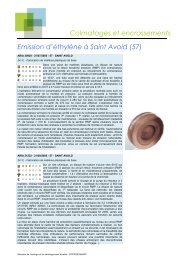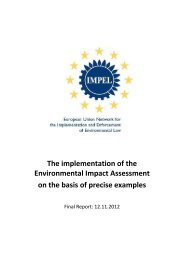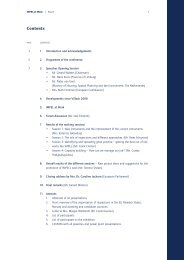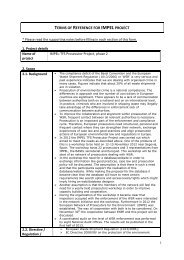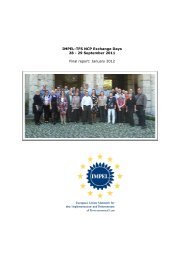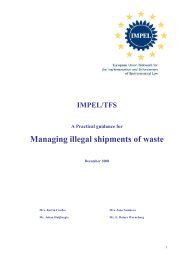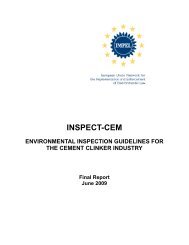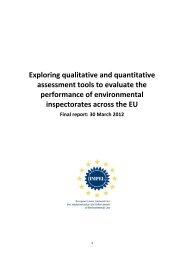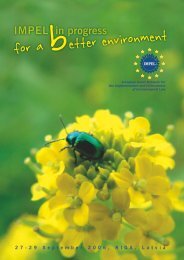2009-09 - IRI Portugal - FINAL REPORT - IMPEL
2009-09 - IRI Portugal - FINAL REPORT - IMPEL
2009-09 - IRI Portugal - FINAL REPORT - IMPEL
You also want an ePaper? Increase the reach of your titles
YUMPU automatically turns print PDFs into web optimized ePapers that Google loves.
1b. Setting priorities<br />
Overview<br />
Criteria for prioritisation of target companies<br />
IGAOT has registered in GESTIGAOT a group of total 20,000 installations subject to<br />
environmental law. In the <strong>20<strong>09</strong></strong> Activity Plan of IGAOT the following target sectors have<br />
been chosen for prioritisation:<br />
• Units that use organic compounds, for instance those covered by VOC’s Directive<br />
and by the Paint and Refurnishing Vehicle Directive<br />
• Transboundary and internal movements of waste<br />
• Deliberate release into the environment of GMOs, specifically those relating to<br />
experimental trials<br />
• Units that have never been inspected before<br />
• SEVESO units<br />
• Road and rail infrastructures financed by EU funds (specially those subjected to EIA)<br />
• Environmentally challenging sites or those that require systematic follow-up<br />
• Units covered by the Programme for the Reduction of Pollution in Surface Waters<br />
caused by specific dangerous substances<br />
Procedure for setting priorities related to IPPC Directive<br />
In 2008 IGAOT developed a risk assessment database for IPPC installations. To overcome<br />
resource challenges IGAOT used PhD students to assist them with the task of inputting<br />
data. The database was completed in <strong>20<strong>09</strong></strong> and uses the following risk criteria:<br />
1. Complexity and Size<br />
2. Emissions to Air<br />
3. Emissions to Water<br />
4. Waste Management<br />
5. Location<br />
6. Attitude of the Operator<br />
7. Compliance Behaviour<br />
IGAOT’s risk assessment tool has been harmonised with the proposals of the Industrial<br />
Emissions Directive (IPPC Re-cast), specifically that it creates a high risk and non high risk<br />
classification for IPPC. A high risk classification means an inspection once every year<br />
whereas a non high risk classification means an inspection once every three years.<br />
This tool is not available for the public to view yet. The review team suggested that<br />
operators may find it useful to see their final risk classification even if individual<br />
components and/or scores are not listed. This would provide the operators with an<br />
understanding of where they stand in relation to their sectoral competitors. The review<br />
team also suggested that annual fees could easily be linked to this system to provide a<br />
financial incentive for operators to reduce their risk classification.<br />
20



